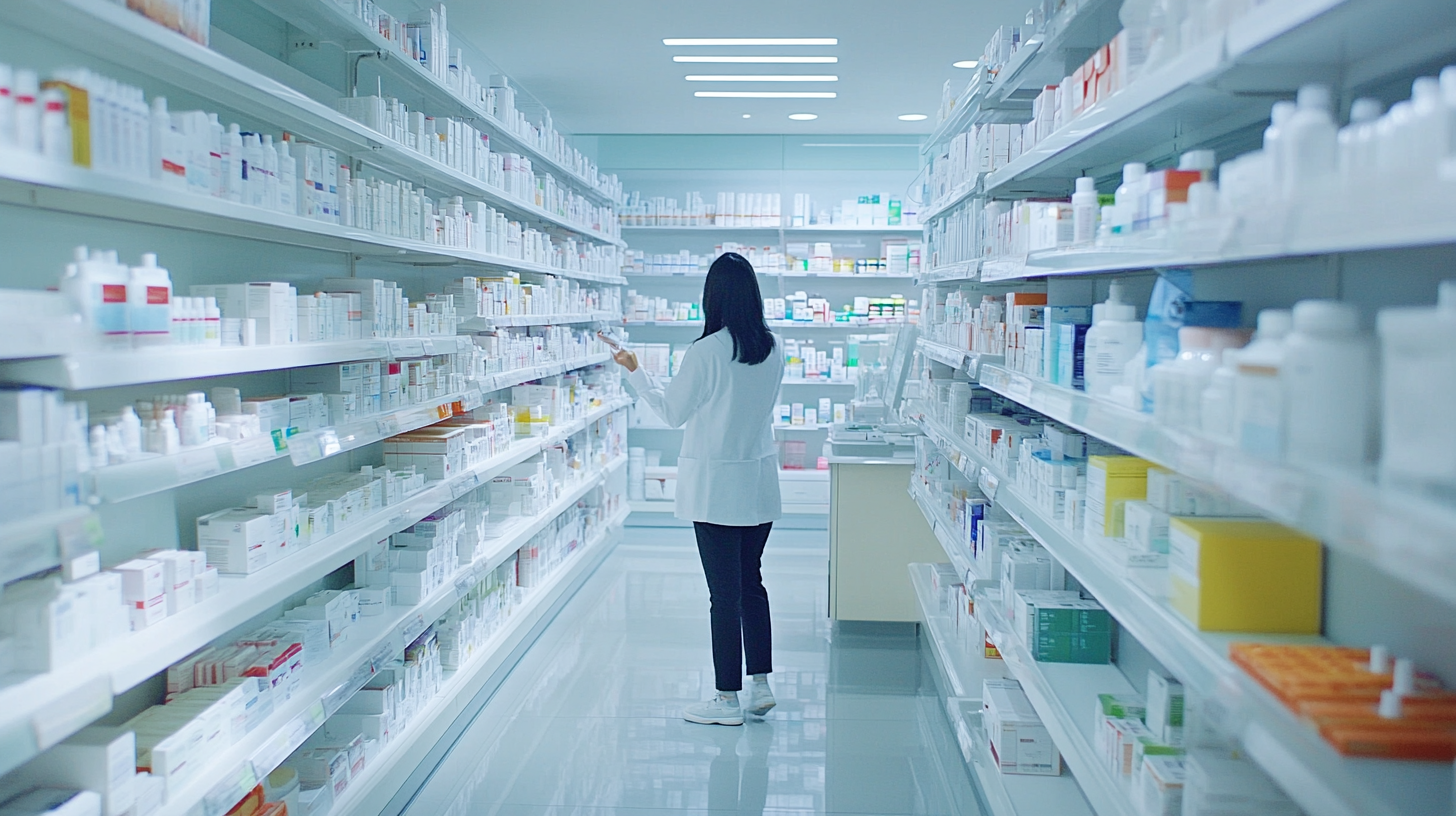The advancement of drug research strategies has become a critical focus for global buyers looking to enhance their procurement processes in the pharmaceutical industry. According to a report by the Global Drug Research Organization, approximately 60% of pharmaceutical companies are currently seeking more efficient research methodologies to reduce time-to-market for new medications. As the landscape of drug development continues to evolve, the integration of innovative research strategies not only streamlines operations but also significantly improves the quality and efficacy of drug formulations. This shift towards refined drug research practices is not merely a trend but a necessity in an industry that demands rapid response to health crises and compliance with stringent regulatory standards.
Moreover, the International Pharmaceutical Federation reports that effective drug research can lead to a 30% reduction in development costs, empowering buyers to allocate resources more efficiently. Such strategies promote collaboration between various stakeholders, including research institutions, biotech firms, and regulatory bodies, fostering an environment where innovative solutions can thrive. By leveraging these advanced drug research frameworks, global buyers can ensure they are not only investing in safer and more effective therapeutic options but also positioning themselves competitively in a rapidly changing market landscape.

In today's globalized market, effective drug research strategies are essential for buyers seeking to maximize their returns on investments. Understanding the intricate landscape of pharmaceutical development not only ensures compliance with regulatory requirements but also facilitates informed decision-making. By adopting robust research methodologies, global buyers can identify lucrative opportunities and effectively mitigate risks associated with drug procurement. The importance of thorough drug research cannot be overstated. It empowers buyers to evaluate the efficacy and safety profiles of substances, ultimately leading to more educated purchasing choices. By analyzing clinical trial results and market trends, buyers can anticipate future demands and align their strategies accordingly, enhancing their market position. Furthermore, these research efforts foster relationships with reputable manufacturers and suppliers, solidifying long-term partnerships that are vital for sustainable growth. Moreover, effective drug research contributes to the overall innovation landscape within the pharmaceutical industry. As buyers advocate for transparency and quality in drug development, they encourage suppliers to invest in cutting-edge research and technological advancements. This collaborative approach not only enhances product quality but also drives progress, benefiting both buyers and end consumers alike. In essence, understanding and utilizing effective drug research is a cornerstone for global buyers aiming to maximize their returns and make a lasting impact in the healthcare sector.

In today’s increasingly globalized pharmaceutical landscape, effective drug research strategies are essential for ensuring that medicines meet the needs of diverse markets. One key strategy is leveraging data analytics to comprehend patient demographics and treatment outcomes across different regions. According to a report by Grand View Research, the global big data in the healthcare market is expected to reach USD 68.75 billion by 2025, reflecting the critical role of data in informing drug development decisions and tailoring products to various regional specifications.
Another vital approach centers around the establishment of international partnerships and collaborations. Engaging with local research entities and regulatory bodies can streamline the drug approval process significantly. As noted by the IQVIA Institute for Human Data Science, 73% of new drugs are now developed with a global strategy in mind, highlighting the importance of collaboration in navigating different regulatory environments and incorporating local insights into research initiatives.
Additionally, adopting adaptive clinical trial designs allows researchers to pivot and make real-time adjustments based on interim results. This flexibility is crucial in a rapidly changing market landscape. A study published in the Journal of the American Medical Association indicates that adaptive trials can reduce the time for drug development by up to 30%, emphasizing the need for innovative methodologies in research strategies. By implementing these key strategies, global buyers can not only enhance the efficacy of drug research but also ensure that they are meeting the specific needs of their diverse patient populations.

Navigating the complexities of international drug procurement is not just about securing the best prices; it also involves carefully considering the myriad of regulatory challenges that come with cross-border transactions. For global drug buyers, understanding the nuances of various regulatory environments is essential to ensure compliance and safeguard against potential pitfalls. A solid framework that addresses these challenges can help streamline the procurement process while maintaining the integrity and safety of the products.
One of the primary strategies for navigating regulatory challenges is to establish strong collaboration with local regulatory bodies and stakeholders. By forging partnerships, international buyers can gain a deeper understanding of local regulations and obtain real-time updates on any changes that may affect their operations. This proactive approach not only facilitates smoother transactions but also fosters a sense of trust and accountability in the supply chain.
Additionally, employing technology and data analytics can significantly enhance compliance efforts. By utilizing advanced software designed for tracking regulatory requirements, buyers can automate monitoring processes and ensure that their practices align with the current laws of each operating country. This level of diligence not only mitigates the risk of non-compliance but also positions buyers as responsible stakeholders in the global market.
In this rapidly evolving landscape, drug buyers must also invest in training and education for their teams. Ensuring that all members are well-versed in regulatory standards is crucial for navigating challenges effectively. By cultivating an informed workforce, companies can adapt to regulatory changes swiftly, minimizing disruptions while optimizing their international purchasing strategies.

In today's fast-paced pharmaceutical landscape, technology plays a pivotal role in enhancing drug research efficiency and accuracy. By leveraging advanced tools such as artificial intelligence (AI) and machine learning (ML), researchers can analyze vast datasets at unprecedented speeds. This capability not only accelerates the identification of potential drug candidates but also improves the precision of analyses, allowing for more informed decision-making in the early stages of drug development.
Furthermore, technologies like cloud computing facilitate collaboration among global teams, breaking down geographical barriers in drug research. Researchers can now share data and insights in real-time, fostering a more integrated approach and ensuring that the most promising opportunities are explored. This interconnectedness not only speeds up the research process but also generates a wealth of diverse perspectives, enhancing the overall quality of the research.
Finally, the use of digital platforms for clinical trials can streamline participant recruitment and management, leading to quicker and more efficient studies. With remote monitoring and electronic data capture, researchers can collect data more accurately and promptly, minimizing potential biases and errors. As the pharmaceutical industry continues to evolve, the integration of technology into drug research strategies will remain crucial for driving innovation and improving therapeutic outcomes on a global scale.
In the highly competitive pharmaceutical industry, building strong partnerships is critical for successful drug development. Collaborative efforts between global buyers, manufacturers, and research organizations can significantly enhance the efficiency and effectiveness of the drug development process. According to a report by Deloitte, companies that engage in strategic partnerships can reduce their time to market by up to 30%. This accelerated timeline not only benefits the firms involved but also expedites access to innovative treatments for patients worldwide.
Collaboration can take various forms, from joint ventures to informal alliances, each presenting unique advantages. For instance, a 2022 study by the Pharmaceutical Research and Manufacturers of America (PhRMA) revealed that collaborative projects tend to yield a higher success rate in clinical trials. This is largely due to the pooling of resources and expertise, which not only mitigates risks but also fosters innovative solutions to complex challenges. In an industry where the average cost of bringing a new drug to market hovers around $2.6 billion, efficient partnerships can result in significantly reduced operational costs.
Furthermore, effective communication and shared goals are fundamental to the success of these partnerships. According to a report from the McKinsey Global Institute, organizations that prioritize collaboration can improve their R&D productivity by up to 40%. This synergy stands to benefit all stakeholders involved, including suppliers, regulators, and ultimately patients seeking new therapies. As the landscape of drug development continues to evolve, fostering strong partnerships will be essential in navigating the complexities of the global market.
